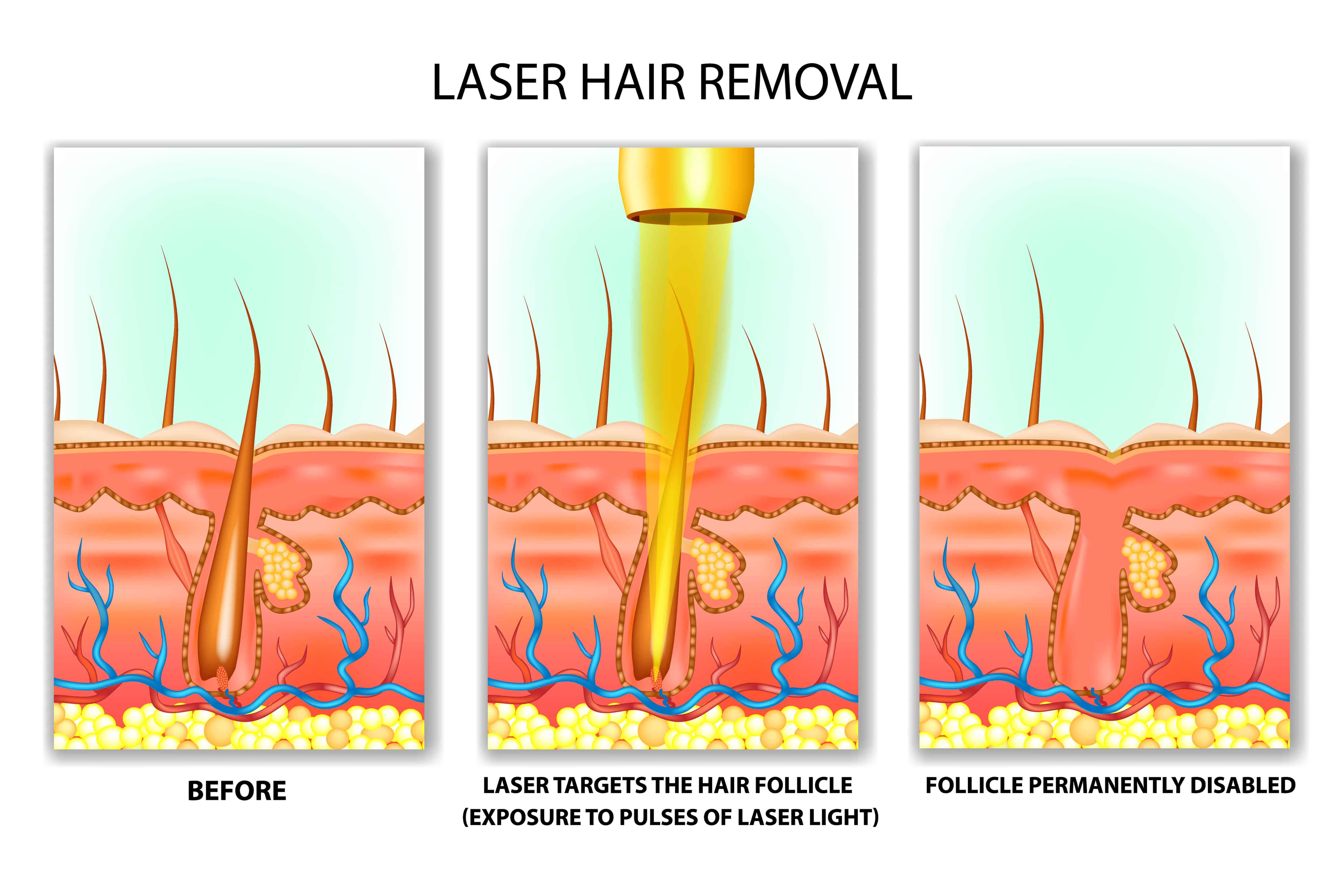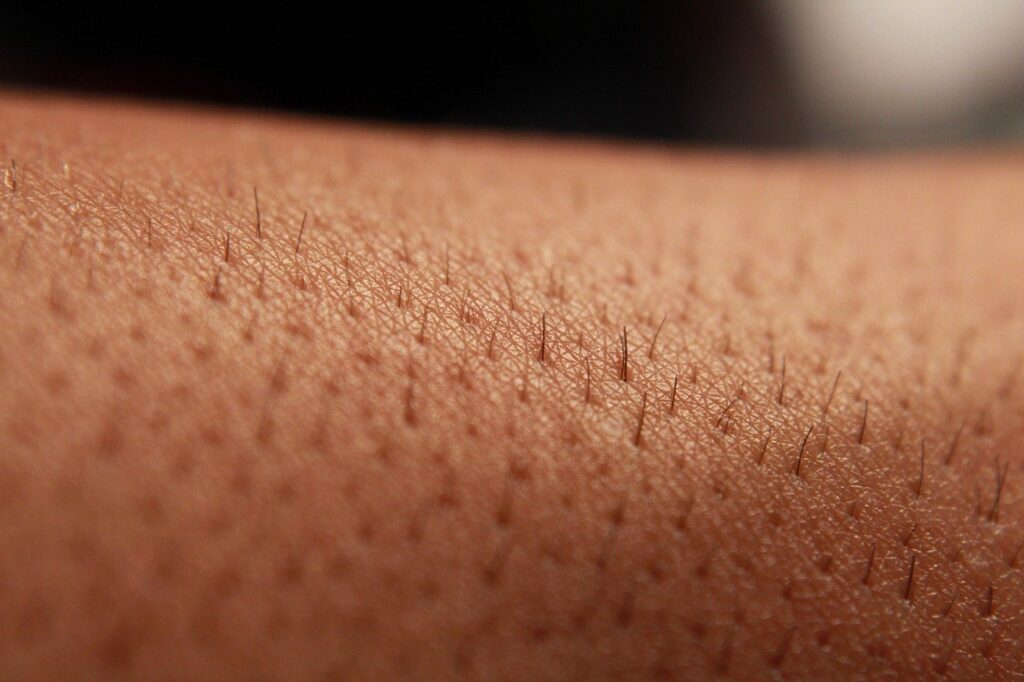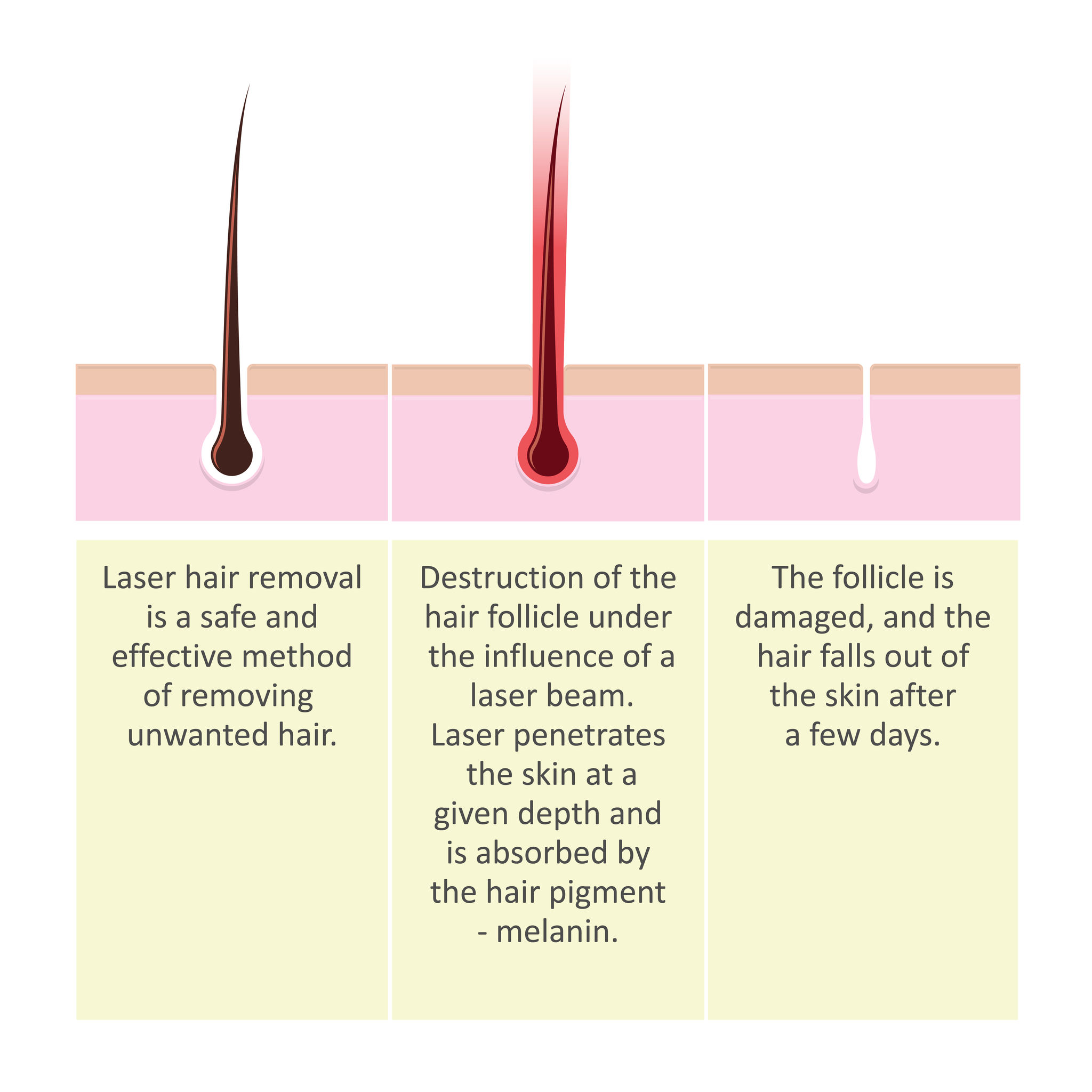Following laser hair removal treatment, some people are surprised to find that hair doesn’t immediately fall out and wonder if the treatment was a failure. When laser zaps your unwanted hair, it’s actually targeting the bottom of the hair follicle where the hair grows, attempting to destroy its ability to grow a new hair in the future.
Hair tends to fall out 5 to 14 days after laser hair removal treatment. Treated hairs tend to curl up and fall out on their own or get removed through exfoliating the skin and showering. Don’t pluck hairs as this can actually stimulate hair growth and ruin the effects of the laser treatment you paid for.
Hair begins to fall out several days following laser hair removal

If you look at the picture above you see an individual hair being treated with laser. The goal of laser hair removal is to zap the hair with a pulse of light that travels down the shaft of the hair to the bottom of the follicle which is the tube where the hair shaft grows.
The above picture is a dramatization and is shown for effect. In reality, the laser wand is held directly against the skin and the hair shaft should have been shaved as short as possible to the skin so that the laser pulse only travels down a short length and is thus more powerful when it reaches the bottom of the follicle.
Laser hair removal process
Laser hair removal heats each unwanted hair with the goal of destroying the hair follicle’s ability to regrow a hair in the future. So when each hair is heated by the pulse of the laser, it is hit with a dedicated flash of light that slightly hurts the skin but is actually aiming for the bottom of the hair follicle.
While the hair shaft tends to be disabled upon being treated – you might even get the occasional burning smell of the hairs being zapped – they don’t fall out right away. Around the 5 day mark post treatment you will start to see hairs falling out if not before and hairs may still fall out after 14 days and beyond.
Post treatment routine after laser hair removal
Following laser hair removal treatment, the main side effects tend to be:
- Reddened and possibly irritated skin for several days
- Curled, shriveled up hairs that are in the process of dying and falling out
- Whiteheads that may appear when pores get temporarily blocked
- A slight rash which may be experienced by people with sensitive skin
- The appearance that hairs are actually growing rather than falling out
On the last point, because of the time frame for hairs to fall out, you might think that the treatment has failed but it can take up to 2 weeks before hairs fall out following laser treatment.
Don’t pluck your hairs after laser hair removal treatment
Since we live in a world with results expected immediately, people have the tendency to want to pluck hairs or shave hair to get rid of it after laser treatment if they don’t feel the hairs are falling out quickly enough.
Plucking or even shaving your unwanted hairs after shaving may interfere with the treatment you just had.
Your best best is to leave your treated unwanted hair alone and let nature take its course. Not only is your skin irritated and healing, there appears to be evidence that plucking hair after laser hair removal may actually do more harm than good.
How quorum sensing may stimulate hair growth
Quorum sensing refers to a collective response from cells to regenerate based on communication and coordinated behavior. Research from the National Center for Biotechnology Information has shown that quorum sensing or quorum signalling may occur in animals with regards to hair loss.
has shown that quorum sensing or quorum signalling may occur in animals with regards to hair loss.
When a group of mice were anesthetized and had a large amount of hair plucked from a small area of their skin, their bodies responded by growing as much as 5 times the amount of replacement hair as was removed.
For the test, 200 hairs were removed from a specific pattern close to one another from each mouse. In some cases, over 1,000 hairs grew back in their place including some in areas that weren’t plucked from.
While quorum sensing had previously been noted in other living things like bacteria, the researchers concluded that this was the first example of it occurring in animal cells.
What does this mean for hair removal and growth?
If this research can be extrapolated, plucking or otherwise manually removing large amounts of hair such as tweezing hair following laser hair removal might actually result in net hair growth and not hair removal. As an aside, it might have implications for dealing with hair loss treatment, too.

How to treat your hair and skin post laser removal treatment
Following hair removal, your recovery time depends on a number of factors such as:
- What body part(s) was treated as some body parts (underarms, bikini area) are more sensitive than others (arms, legs).
- Which laser hair removal technology was used as modern machines have cooling features that older ones don’t come with that help to protect the skin and make the process more comfortable.
- How good your practitioner is. Some people have more skill than others so choose your hair removal clinic carefully!
- How quickly you heal and can tolerate pain. If you have sensitive skin, it may take longer to heal up but several days is typical.
After laser hair removal treatment, you want to take care of the treated skin by staying out of the sun, wearing loose fitting clothing, moisturizing if needed and avoiding shaving or plucking the area in question. Limit showers to a water temperature your skin can tolerate.
You can lightly exfoliate the skin with a loofah while showering as this will help to loosen hairs that are falling out and decrease the chance of ingrown hairs which often occurs after hair removal treatments like laser, IPL and waxing.
Are you unsure if your current line of laser treatment is working? Check our my article Should I Change Laser Type Mid Treatment?
Recent Posts
Laser hair removal may not be as effective for individuals with red hair, as well as those with blonde, gray, or white hair, because the laser targets the pigment (melanin) in the hair follicle....
Laser remains a very popular form of hair removal and for several reasons. While not a permanent hair removal option like electrolysis, the benefit of laser is that it enables you to treat more...


